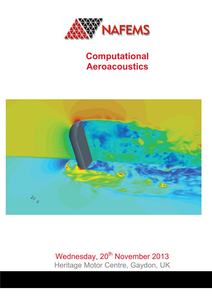
The first one-day NAFEMS Seminar devoted to Computational Aeroacoustics and CAE methods for noise propagation and transmission was held at the Motor Heritage Museum on 20th Nov 2013. The event was extremely well supported, the attendance comprising an excellent mix of industry sector applicators, methods developers and researchers. An interactive, compact and full day resulted in insightful views, discussions on the current use of these methods in design and application, current research activities and needs of the community.
Many industry sectors face increasing pressures from their customers to reduce flow noise and its transmission to the near/far-field or through structural panels. We all understand the power behind CAE, and appreciate the benefits and value this brings to design, analysis, product cycle and ultimately customer satisfaction.
I am grateful to many individuals for accepting the invitation to speak at this event. In particular, Prof. Richard Sandberg, Southampton University, deliver a most informative keynote address which covered, from the academic as well as practical viewpoint, the hierarchy of computational methods available now and which will become commonplace in the near future.
The ultimate justification for CAE software comes from its utilization in Industry. We were honoured to host representations from Mercedes-Benz, Jaguar Land Rover and Rolls-Royce all of which are globally appreciated as being leaders in engineering technology. Renier Togginga, Adrian Gaylard and John Coupland gave a very current customer-facing overview of the needs and future challenges. Sebastian Kowalczyk brought good insight into the requirements for noise prediction in hydrodynamics, supported by measurements and predictions at CTO, Poland.
Commercial software suppliers of acoustic and aeroacoustic software were equally well represented. I am similarly grateful to Ansys, CD-adapco, ESI Group and LMS for their contributions on state-of-the-art aero-vibro-acoustic methods.
All extended abstracts from the Seminar are published here. I encourage any feedback which will help us in future to progress, improve or revise the content of future Aeroacoustics Seminars towards your own unique needs.



